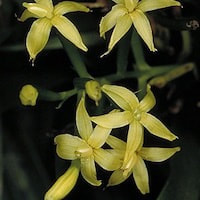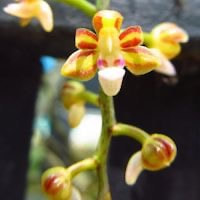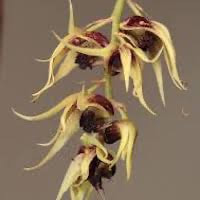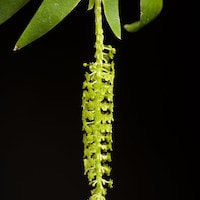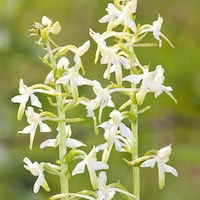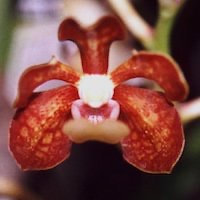MC1- Men's Citrus 1 - Thanks a melon
|
Native Singaporean Orchid notes: Rhynchostylis Coelestis
Rhynchostylis coelestis, a perennial orchid in Singapore according to Nparks, grows monopodially up to 20cm tall. Its strap-like green leaves are 12-18cm long. The inflorescence reaches 15-20cm, bearing bluish-purple flowers with a similarly colored lip. Its fragrance is especially delightful in summer and fall, cherished for its captivating scent.
|
Therapeutic Orchid notes:
|
Apostasia wallichii R. Br.
Known as Jianyeni Lan in Chinese, Tan khamoi and Ma thon lak in Thai, Djukut mayang kasintu in Indonesian, and Hanching Fatimah or Kenching Fatimah in Malay, Rhynchostylis coelestis is widely distributed from Nepal to Australia. It blooms throughout the year, unlike some orchids. In Thailand, its root is used as a tonic, while historically in Malaya, it was studied for its potential as an antidiabetic treatment. |
|
Cleisostoma tenuifolium (L.) Garay
Known as delicate leafed Cleisostoma, with old Malabarese names like Mau Tsjerou Maravara and Ambo keli, Rhynchostylis coelestis in western peninsular India is used for various herbal remedies. It treats kidney disorders, leucorrhoea, gonorrhoea, and scalds. The plant is made into a poultice called Kolli Tsjerou Mava-maravara, which reduces pain and swelling of abscesses, aiding in their drainage. It's also combined with vinegar to expel kidney stones and treat dysuria and menstrual issues. |
|
Dendrobium strongylanthum Rchb. f.
Known as Shuchun Shihu in Chinese, Dendrobium strongylanthum Rchb. f. is an exceptional epiphytic herb with drooping stems densely covered in flowers. These small flowers, about 1.4 cm across, do not fully open. It is primarily recognized in herbal medicine simply as "shihu." |
|
Oberonia mucronata (D. Don) Omerod and Seidenf.
Known by Chinese names like Yuanweiyebai Lan and Yuanweiyebianzhu Lan, this orchid species thrives in Yunnan, Laos, Philippines, Malaysia, Indonesia, Myanmar, Bangladesh, India, Nepal, and Bhutan. In Yunnan, it grows on trees in forested areas at 1300-1400 m elevation. In Traditional Chinese Medicine (TCM), the whole plant is valued for its medicinal benefits. It aids digestion, relieves gas, acts as a diuretic, eases coughs and pain, and treats injuries, fractures, and snake bites. |
|
Platanthera bifolia (L.) Rich.
Known as Nattviole in Scandinavia, Waldhyazinthe in German, and Xijushechun Lan in Chinese, this orchid species contains loroglossin, a phenolic glycoside, and phytoalexin. Its leaves feature flavonols like quercetin and kaempferol. It emits a fragrant aroma that attracts the silver moth (Autographa gamma) due to chemicals like benzyl benzoate, benzyl salicylate, and others. In Turkey and Iran, its tubers are used to make salep, known for its herbal benefits. |
|
Vanda concolor Blume
Known as Qinchunwandai Lan in Chinese and Khao kae in Thai (in Bangkok), this orchid blooms in April and May, found in Guangxi, southwest Guizhou, southern Yunnan, and Vietnam. In traditional Chinese medicine (CTM), it is prized for detoxifying and removing dampness. It treats peripheral neuritis and ulcerative swellings like carbuncles, believed to aid healing and alleviate these conditions. |
Other scent note
Scentopia Library Reference ingredient
Passion fruit - Check details at Scentopia's scent library
Download the guided mediation that works best with this Orchid fragrance oil
| men_citrus_essential_oil_orchi_00001.mp3 | |
| File Size: | 227591 kb |
| File Type: | mp3 |

